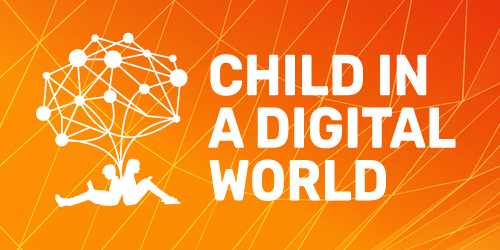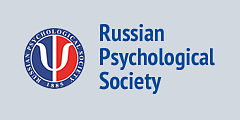2019
-
The Wellbeing Toolkit Training Programme: A Useful Resource for Educational Psychology Services?
-
Adolescent Social Emotional Health, Empathy, and Self-esteem: Preliminary Validation of the Lithuanian Version of the SEHS-S Questionnaire
-
Collaborative Game Design with Children with Hemophilia as a Tool for Influencing Opinions about Physical Activity at School
-
Reading Performance in Adults with Intellectual and Developmental Disability (IDD) When They Read Different Kinds of Texts
-
The Principle of Open Individuality as a Basis for Teenagers’ Creative Interaction with Lyric Poems
-
The Importance of Communicating Psychological Concepts in Educational Contexts: a Portuguese Exhibition
-
Evidence–Based Practice for Psychologists in Education: A Comparative Study from the Czech Republic, Slovakia, and Slovenia
-
Supporting Vulnerable Groups of Students in Educational Settings: University Initiatives and Partnerships
-
Perception of Teacher Support by Students in Vocational Education and Its Associations with Career Adaptability and Other Variables
-
Measuring and Compensating for Deficits of Self-Regulation in School Children via Ambulatory Assessment
-
Psychological Indicators of Delinquent Behavior in Adolescents: The Potential of the ‘Psychological Risk Factors of Deviant Behavior in Adolescents Inventory’ for Differentiating Between Adolescents with Delinquent Behavior, Drug Addiction, and ControlsPDF HTML6709cite
Rasskazova, E.I., Tkhostov, A.S., Falkovskaia, L.P., Kiseleva, A.L., Krem- lev, A.E., Artamonova, E.G. (2019). Psychological Indicators of Delinquent Behavior in Adolescents: A Potential of the ‘Psychological Risk Factors of Deviant Behavior in Adolescents Inventory’ for Differentiating Between Adolescents with Delinquent Behavior, Drug Addiction and Controls. Psychology in Russia: State of the Art, 12(3), 149–162.
copied
-
Effect of the Training Program to Improve Emotional Creativity among Undergraduate Students
-
Parent Responsiveness and its Role in Neurocognitive and Socioemotional Development of One-Year-Old Preterm Infants
-
The Health Belief Model and Prediction of Breast Self-examination Practices in Female Mexican College Students
-
Growing Up with ASD (Autism Spectrum Disorder): Directions and Methods of Psychological Intervention
-
Individual Differences in Fine Motor Precision in Participants from Different Countries and their Psychological Meaning
-
Reliability and Validity of the 10-Item Personality Inventory among Older Iranians
-
The #faceofdepression Hashtag in the Facebook and VKontakte Social Networks: The Public Discourse Features among a Russian-Speaking Audience
-
Using the Model Statement Technique as a Lie Detection Tool: A Cross-Cultural Comparison
-
Development of a Russian Version of the MindTime Profile Inventory: The Measurement of Past, Present, and Future Thinking in a Russian Sample
-
Homesickness, Locus of Control and Social Support among First-Year Boarding-School Students
-
World Assumptions and Youth Identity as Predictors of Social Activity Preferences
-
The Level of Multidimensional Perfectionism and Motivational Orientation among Undergraduate Students
-
Tolerance, Empathy, and Aggression as Factors in Compliance with Rules of Online Communication by Russian Adolescents, Young Adults, and Parents
-
Possible Cognitive Mechanisms for Identifying Visually-presented Sound-Symbolic Words
-
Comparing the Generation of Words from Different Semantic Categories in Native and Foreign Languages
-
Eye Movements and Word Recognition during Visual Semantic Search: Differences between Expert and Novice Language Learners
-
Luria's Approach to the Restoration of Speech in Aphasia and the International Classification of Functioning, Disability and Health (ICFDH)
-
The Relationship Between Executive Functions and Language Competences in Middle School Children
-
Modeling Personality Structure Using Semantic Relationships: Is the HEXACO Honesty-Humility a Distinct Trait?
-
The Relationship of Language and Intelligence Development to the Maturity of the Subcortical Structures in Children with Specific Language Disorders
-
What Are You Tinking About Where? Syntactic Ambiguity between Abstract Arguments and Concrete Adjuncts in Hungarian, Modulated by Concreteness
-
A Four-Dimensional Spherical Model of Interaction Between Color and Emotional Semantics
-
Developing Secondary Language Identity in the Context of Professional Communication
-
Understanding of Active and Passive Constructions in 7- to 10-Year-Old Russian-Speaking Children: Reliance on Inflections or Word OrderPDF HTML4584cite
Akhutina, T.V., Panikratova, Y.R., Korneev, A.A., Matveeva, E.Yu. & Vlasova, R.M. (2019). Understanding of active and passive constructions in 7- to 10-year-old Russian-speaking children: Reliance on inflections or word order. Psychology in Russia: State of the Art, 12(1), 3–20.
copied
- Back
- 1
- Next
- Pages









